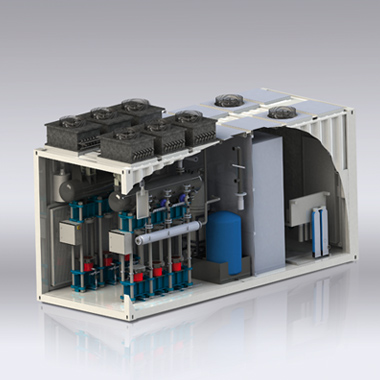Scientists from Keimyung University in South Korea have developed a new algorithm that may help select the proper size of a power-to-gas (P2G) system more efficiently in areas with high PV power penetration rates.
They explained that building P2G facilities may reduce PV curtailment, while improving grid stability and increasing PV acceptance rates. They also noted that the proposed algorithm adopts the point of view of policymakers, as it looks more into maximizing the penetration of PV systems into the grid, and less into actual costs.
“We are currently considering expanding the model to account for financial aspects such as initial investment costs, operational and maintenance costs, and anticipated return on investment,” the research's lead author, Yeong Geon Son, told pv magazine. “Through such expansions, we anticipate being able to more accurately assess the overall financial value and efficiency of PV-P2G projects.
In the study “Systematic planning of power-to-gas for improving photovoltaic acceptance rate: Application of the potential RES penetration index,” which was published in Applied Energy, the Korean group emphasized that the new algorithm can also benefit independent power producers, as it can help them achieve a more precise knowledge of the capacity for their P2G system, which in turn might prevent overestimation of the system size needed, thus saving money for the investors.
In the proposed system configuration, the P2G system is assumed to be for hydrogen production and to utilize surplus power from the PV plants to energize electrolyzers.
The algorithm works in three different steps: first, it calculates the renewable energy saturation point (R-SP); then it calculates the P2G saturation point (P2G-SP); and finally uses these values to derive the Potential PV Penetration Index (PRPI), an indicator of available energy per capacity input.
“When a general optimization system is applied, the capacity of the P2G facility is derived as one of the multiple solutions that satisfy the maximum PRPI, unless constraints involving complex mechanisms are applied,” the team explained. “However, as proposed in this paper, a P2G facility with an extreme PRPI cannot be an appropriate capacity.”
It also highlighted that, when the algorithm considers the capacity of the P2G facility, the PRPI is reduced by 0.02 and the capacity of the P2G system itself is reduced by 65% at the R-SP. Furthermore, it also ascertained that midpoint and worst R-SPs also slightly reduced PRPI, with the required capacity of the P2G facility being also significantly reduced. “This can be considered an excellent plan, taking into account the high equipment cost of the P2G facility,” it stated.
The academics stressed that system planners should select a PRPI that does not exceed the PG-SP and said the algorithm should then determine the capacity of PV and P2G facilities to achieve the desired PRPI. “It is crucial to determine the appropriate PV capacity before planning P2G facilities,” they specified.
According to the paper, the novel algorithm has the potential to be applied to other renewable resources, among them wind turbines. “In future research, we plan to expand the cases, apply the proposed method to various renewable sources, including PV and wind turbines, and conduct in-depth analysis on the indices for each power source,” they concluded.
This content is protected by copyright and may not be reused. If you want to cooperate with us and would like to reuse some of our content, please contact: editors@pv-magazine.com.



2 comments
By submitting this form you agree to pv magazine using your data for the purposes of publishing your comment.
Your personal data will only be disclosed or otherwise transmitted to third parties for the purposes of spam filtering or if this is necessary for technical maintenance of the website. Any other transfer to third parties will not take place unless this is justified on the basis of applicable data protection regulations or if pv magazine is legally obliged to do so.
You may revoke this consent at any time with effect for the future, in which case your personal data will be deleted immediately. Otherwise, your data will be deleted if pv magazine has processed your request or the purpose of data storage is fulfilled.
Further information on data privacy can be found in our Data Protection Policy.